When people picture chickens, they often picture the iconic image of a white hen with red combs.
If you are looking for something different to add to your farm, consider these 19 gray chicken breeds.
The gray coloring sets them apart and makes a unique and distinctive addition to any farm.
We’ll tell you all about gray chickens and some popular breeds sporting a distinctive hue.
Table of Contents
ToggleAmeraucanas
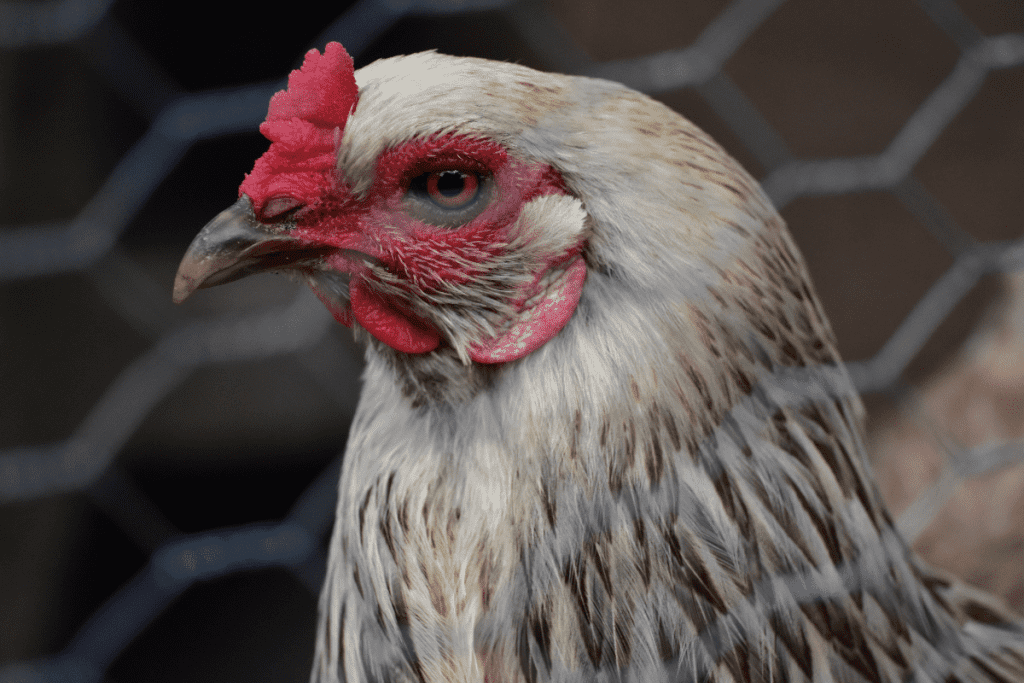
The Ameraucana breed of chicken comes in a wide range of colors.
To get a gray Ameraucana chicken, you’ll need to find a Lavender Ameraucana.
This chicken breed was created in the 1970s.
The Ameraucana’s ancestors are bred from ancestors from South America.
This breed is considered to have a good temperament.
Another fun fact about gray Ameraucanas is their ability to lay blue eggs as they carry this gene.
Ameraucanas come in both bantam and large fowl varieties.
Both sizes are host to the Lavender and gray colors.
Leghorns
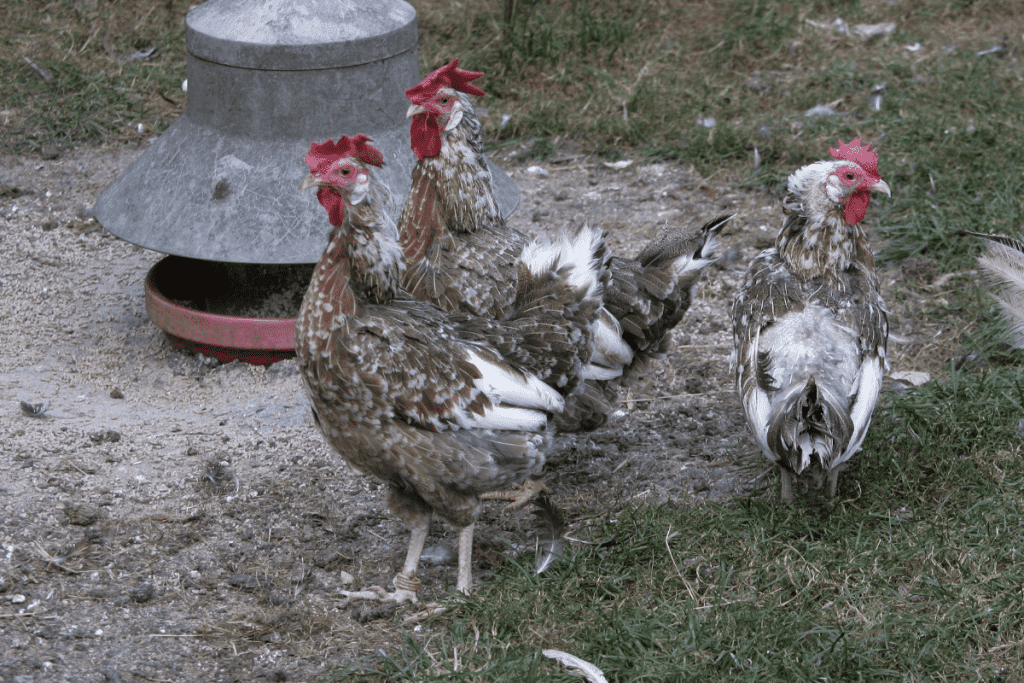
Leghorns are a great chicken breed.
They are small yet tenacious.
They tend to forage voraciously and can fly up and roost into trees if given a chance.
While gray is not the standard color for Leghorns, variations of the breed are sporting this color.
The Lavender gray coloring is rare for Leghorns but still exists.
They are active birds with beautiful plumage.
Andalusians
The Andalusian breed of chickens is native to the Mediterranean region of the world.
They are considered adaptable, hardy, beautiful, and productive breeds.
The Andalusian chickens are known for being an excellent egg layer.
They also are celebrated for their reputation of being wonderful winter layers.
The chickens also produce a respectable amount of meat.
Their gray coloring is attributed to a marbling effect of black, white, and gray feathers.
There is also a variety of Blue Andalusians.
The combination makes for one beautiful bird.
Sapphire Gem
The Sapphire Gem chicken breed is a unique variety.
It is one of the many grey chicken breeds known to make an excellent addition to farms.
Not only is it a beautiful bird, but it is also an excellent producer of eggs.
Originally from the Czech Republic, the Sapphire Gem breed results from crossbreeding a Blue Plymouth Rock with a Barred Plymouth.
The result is the stunning display of gray coloring on this unique chicken.
Lavender Wyandotte
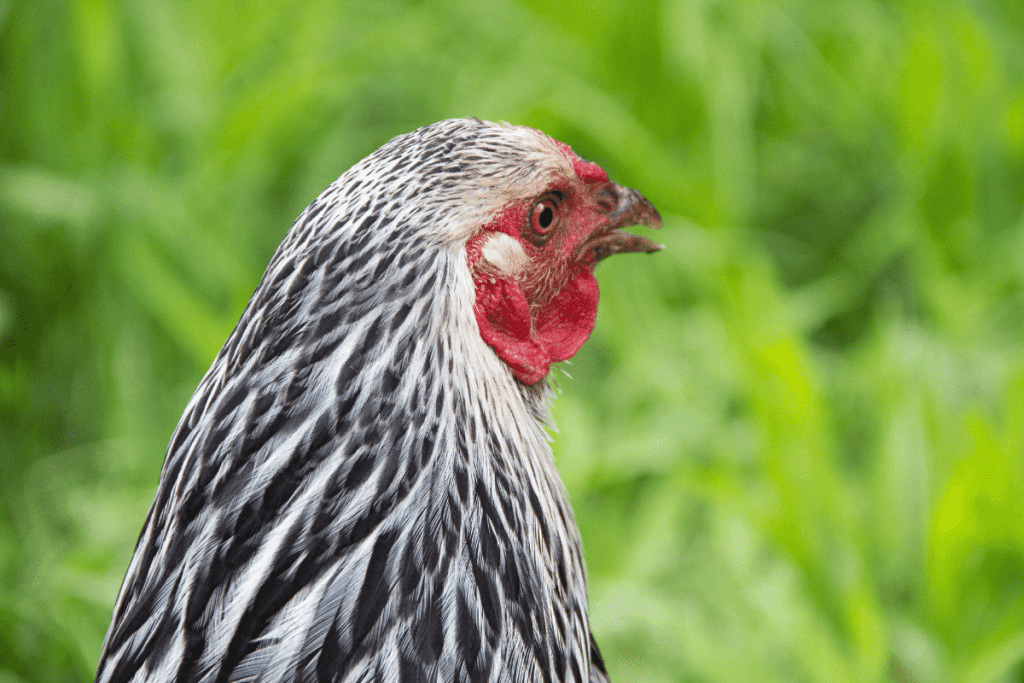
The Wyandotte chicken breed dates back to the 1800s in the United States.
The Lavender varieties of this chicken are visually stunning.
The gray and lavender hue of their feathers makes quite the spectacle.
The Lavender Wyandotte makes an excellent dual-purpose chicken.
They are excellent dual-purpose birds.
They are reliable layers and meat producers.
This gray egg-laying breed makes a perfect combination of utility and beauty for most family farms.
Related: Lavender chicken breeds you must see!
Araucanas
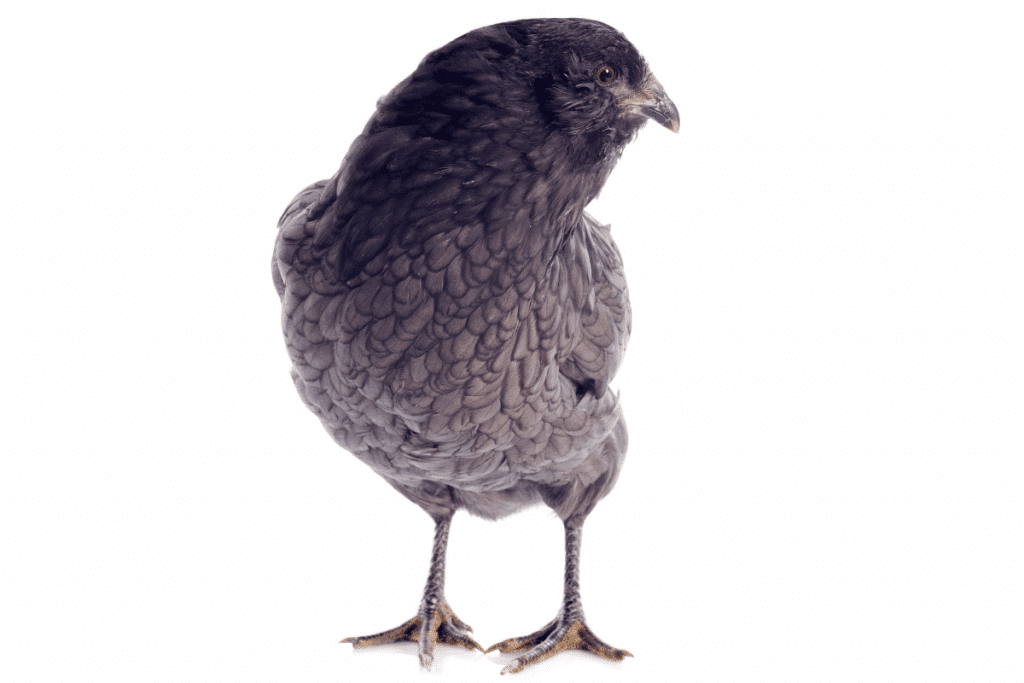
The Araucana chicken breed comes in many different color varieties.
The gray variety is beautiful.
Araucanas are known for starting the blue egg gene frenzy.
They naturally lay beautiful blue eggs.
This unique part of their egg production makes them very popular.
For this reason, many other chicken breeds are crossbred with Araucana chickens in an attempt to share this unique trait of laying blue gene eggs.
Cochins
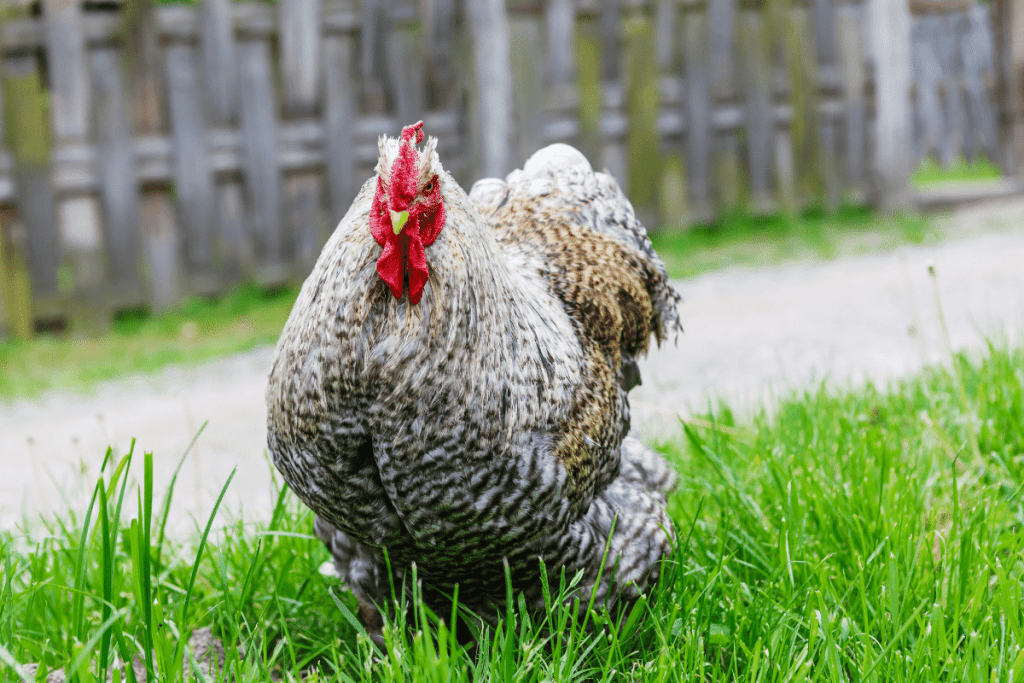
The Cochin breed of chicken is a beauty known for having feathers covering all the way down its feet.
They are beautiful birds with lots of fluffy feathers.
The Cochin chicken comes in a wide range of colors, including gray.
They also come in other color variations, including black, white color, brown color, speckled, and more.
The breed originated from crossing European and Chinese species.
Cochin chickens have a reputation for being well-tempered and sociable in a farm setting.
The gray coloring and good attitude make it an excellent choice for backyard flocks.
The gray color has blue hues, which makes for a nice coloring.
Faverolles
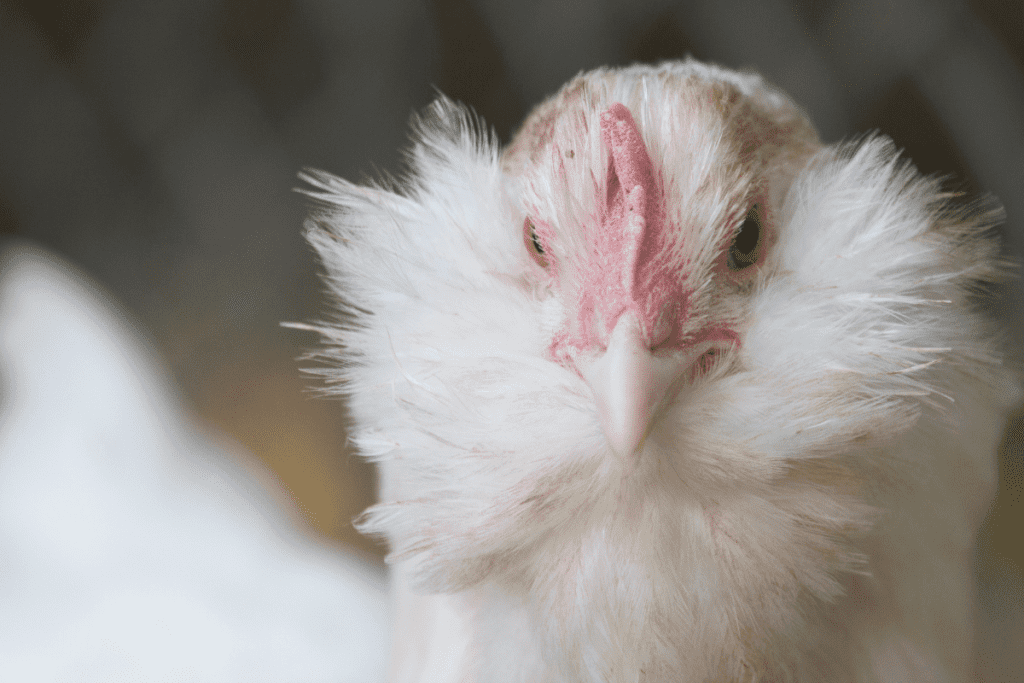
The Faverolle breed of chicken is a French breed with unique standard coloring.
Usually, the Faverolle chickens come in a distinctive salmon color.
The dual-purpose breed also comes in other color types, including gray with beautiful feathers.
Faverolle chickens make excellent egg layers, meat producers, and show chickens.
They serve a variety of purposes depending on the desires of the chicken keeper.
Check out our list of show chicken breeds.
Hamburgs
Hamburg chickens are a unique and smaller breed.
They are originally from Holland.
The usual coloring of Hamburg chickens is quite eye-catching.
The main feathers are usually bright white with contrasting black spots throughout their body.
While this is the main coloring preferred if showing Hamburgs, they also come in gray.
The gray coloring is usually a result of mixing the black and white feathers, making up the Hamburg chicken’s signature look.
Australorp
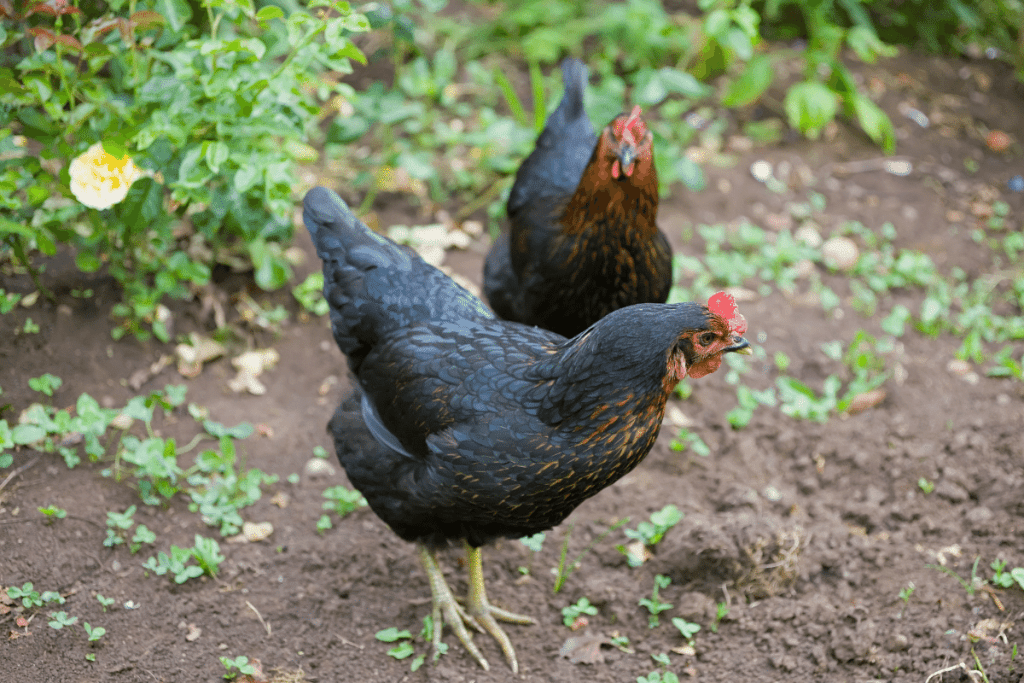
The Australian breed of chicken called the Australorp chicken is an excellent option for free-range farms and backyard coops.
The Australorp breed is celebrated for being an extremely prolific egg layer.
Australorp chickens are known for laying up to 300 eggs in a short period.
The Australorp are great pet chickens with a very personable disposition for backyard chicken owners with children.
They are very docile and don’t usually mind being pet or picked up.
While they may be shy at first, these chickens tend to warm up as quickly as they grow.
Minorca
The Minorca chicken breed is originally from the Mediterranean but is a recognized breed in many countries.
Minorca chickens usually come in either white or blue.
The Blue Minorca breed of chicken is recognized as a separate breed in the United Kingdom.
The coloring of the Blue Minorca produces a gray coloring.
This beautiful bird would make an excellent addition to a free-range farm or backyard chicken flock.
Speaking of blue, check out our list of the best blue chicken breeds to add to your farm.
Naked Neck
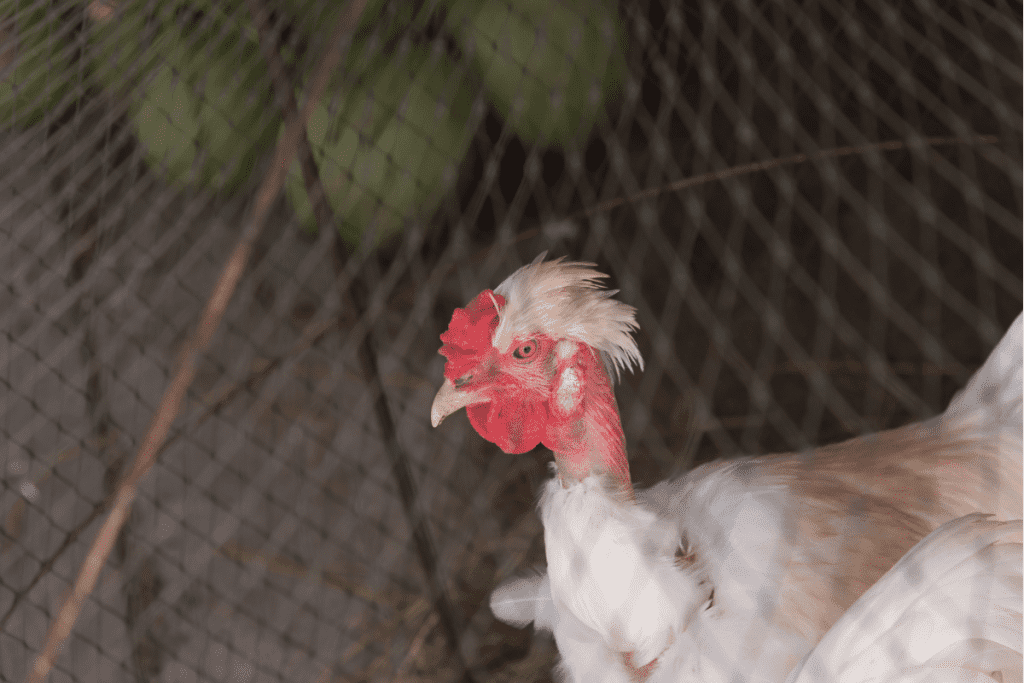
The Naked Neck chicken may not be the most attractive bird on this list, but they do come in gray varieties and are sure to be a conversation starter.
Chickens of the Naked Neck breed are born without any feathers on their neck.
They are naturally devoid of feathers growing in this area which is where these chickens get their name.
The Naked Neck chicken breed comes in a wide variety of colors, including gray.
Orpington
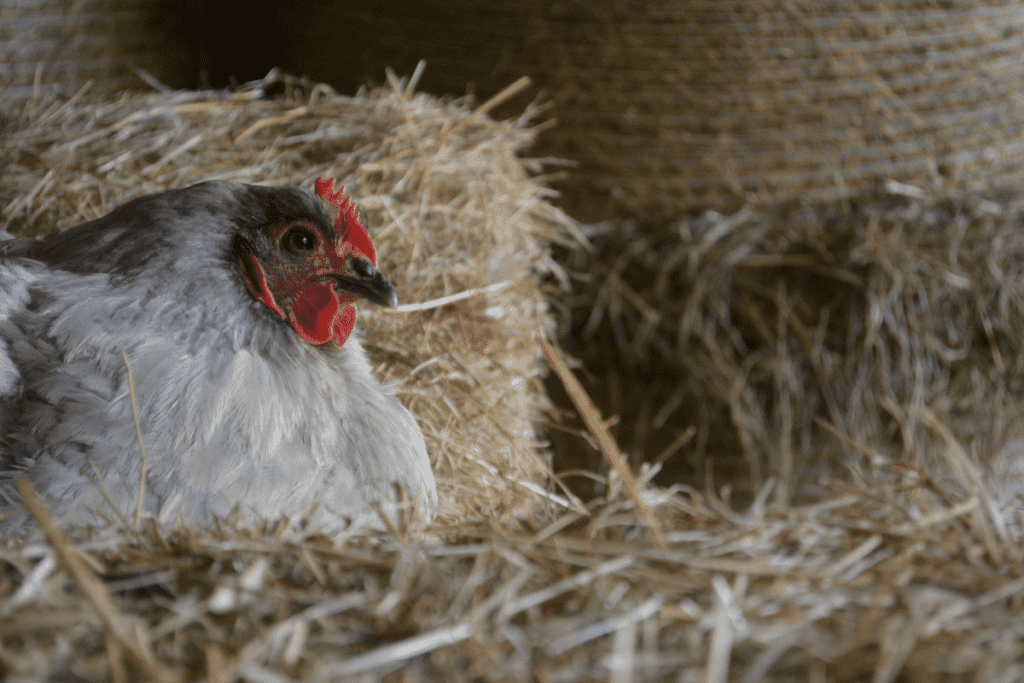
The Orpington chicken breed is fairly common amongst farmers.
They often come in both blue and lavender varieties.
This means you have a choice between the hue of the gray Orpington you choose.
Some will have slightly more blue undertones, while others will have lavender shades of grey feathers.
Orpingtons are considered to be extremely friendly.
Related: Orpington Chicken Egg Guide
Brahma
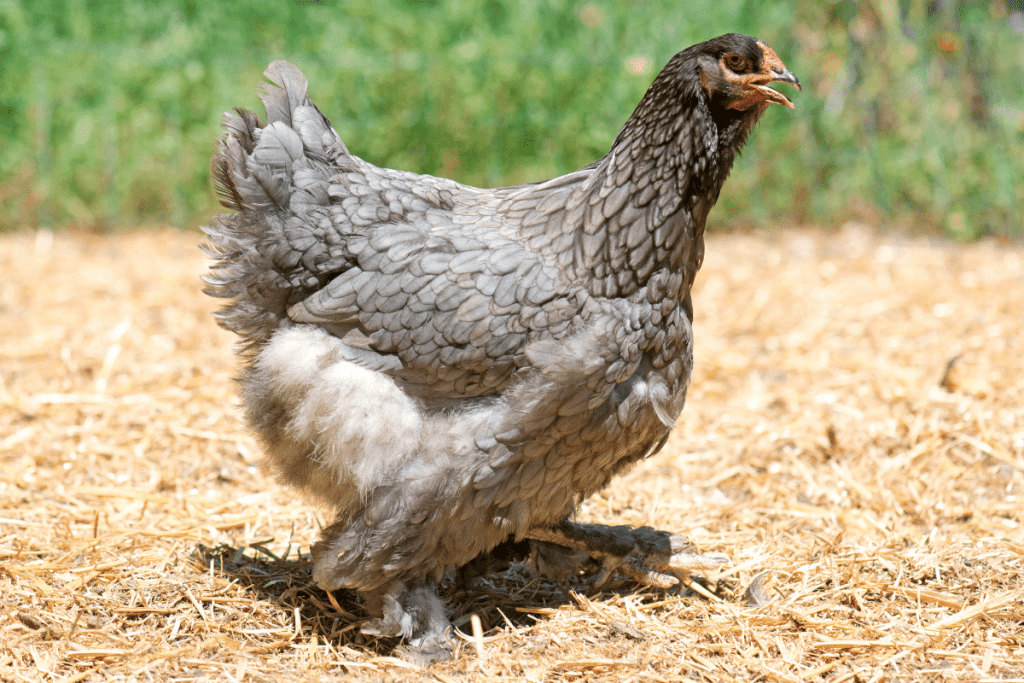
The Brahma breed of chicken is a popular choice.
They are from the Americas and are descended from ancestors from Shanghai, China.
Like many other popular chicken breeds, Brahmas come in a wide range of colors, including a gray coat of feathers.
They make excellent chickens for backyards and farms alike.
Known for their brown eggs and excellent meat production, the Brahma is an excellent choice.
They are docile birds and have good temperaments, making them ideal for backyard farms with children on the property.
Further reading: Brahma chicken eggs questions and answers
Easter Egger
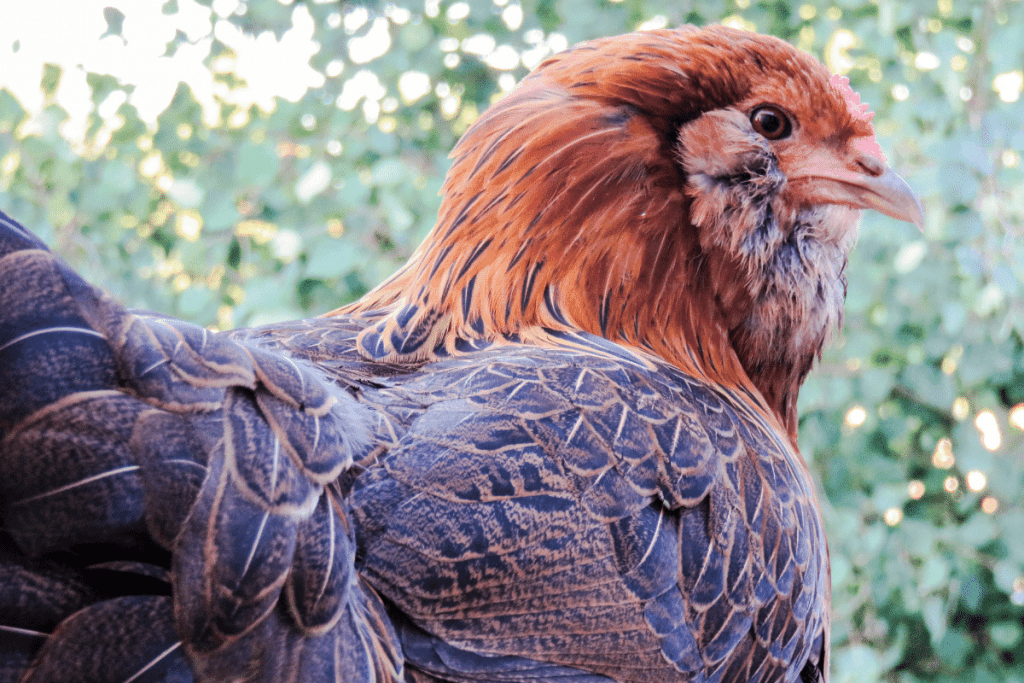
The Easter Egger chicken breed crosses between the Ameraucana and Araucana breeds.
They were crossbred between the two breeds to capitalize on the fun and unique blue eggshell color gene.
This means they lay colorful blue eggs in addition to the Easter Egger chicken breed’s beautiful gray feathers.
When you introduce Easter Egg chickens to your farm, one thing to keep in mind is their reluctance to sit on their eggs.
Many chicken farmers find mixing Easter Egg chickens with a breed like Silkies, who tend to brood, helps keep them on their eggs to warm them.
Plymouth Rock
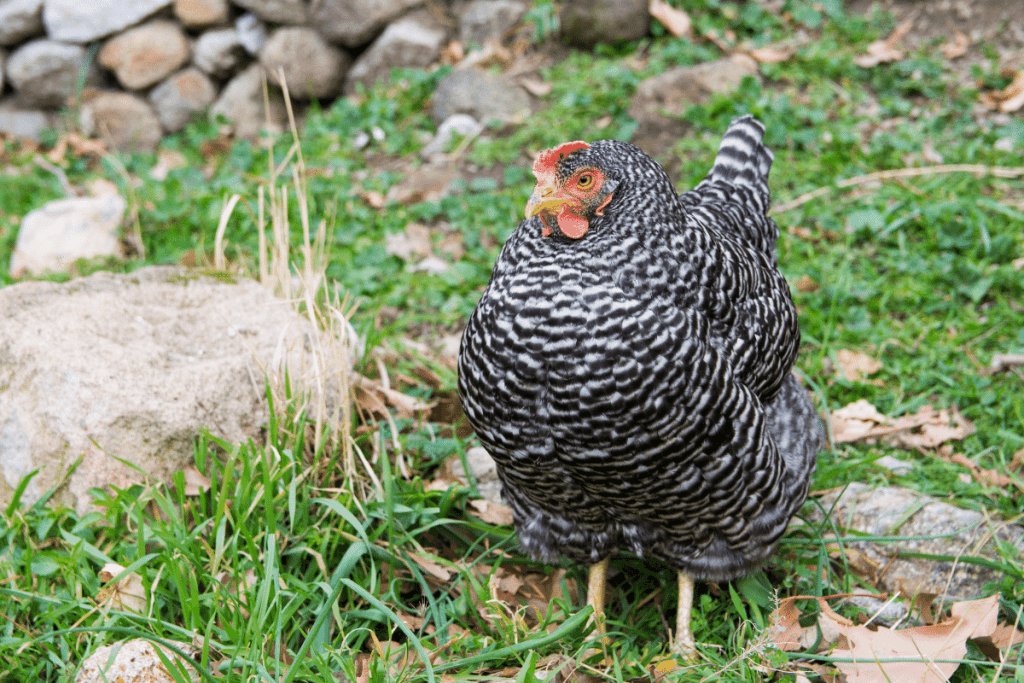
The Plymouth Rock breed of chicken is technically mostly black and white.
They do, however, tend to look gray from a distance.
The breed makes an excellent addition to farms and is known for being excellent and productive egg layers.
In addition to being excellent layers, Plymouth Rock chickens are very good for meat.
Many people consider this dual-purpose breed one of the most iconic and oldest of the American chicken breeds.
The Barred Plymouth Rock has a mixture of black plumage with white color feathers, which makes for a beautiful breed of poultry.
Silkie
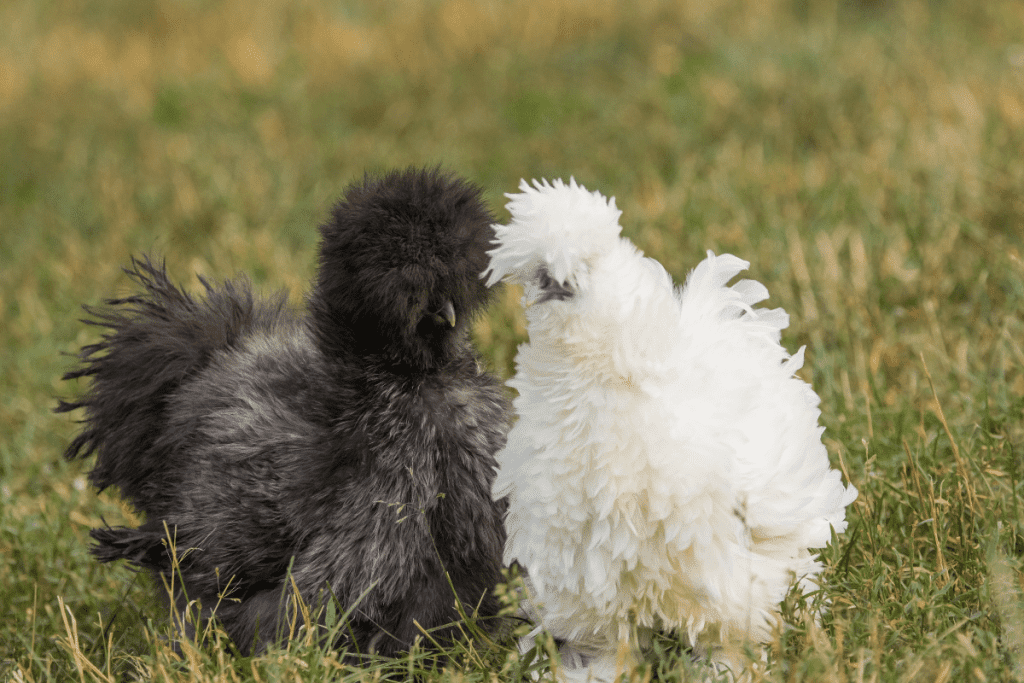
The Silkie chicken breed is unique looking and has grown in popularity over the last few decades.
They are very fluffy with an abundance of feathers and a distinctive look.
Silkie chickens come in both lavender and blue varieties.
Both of these colors tend to be gray-looking.
Experienced chicken farmers tend to have trouble with the lavender Silkies.
They are not known for their hardiness and tend to die at young ages.
The blue Silkies, on the other hand, are much more durable.
They are friendly birds with fluffy plumage and are great additions to any farm.
Frizzles
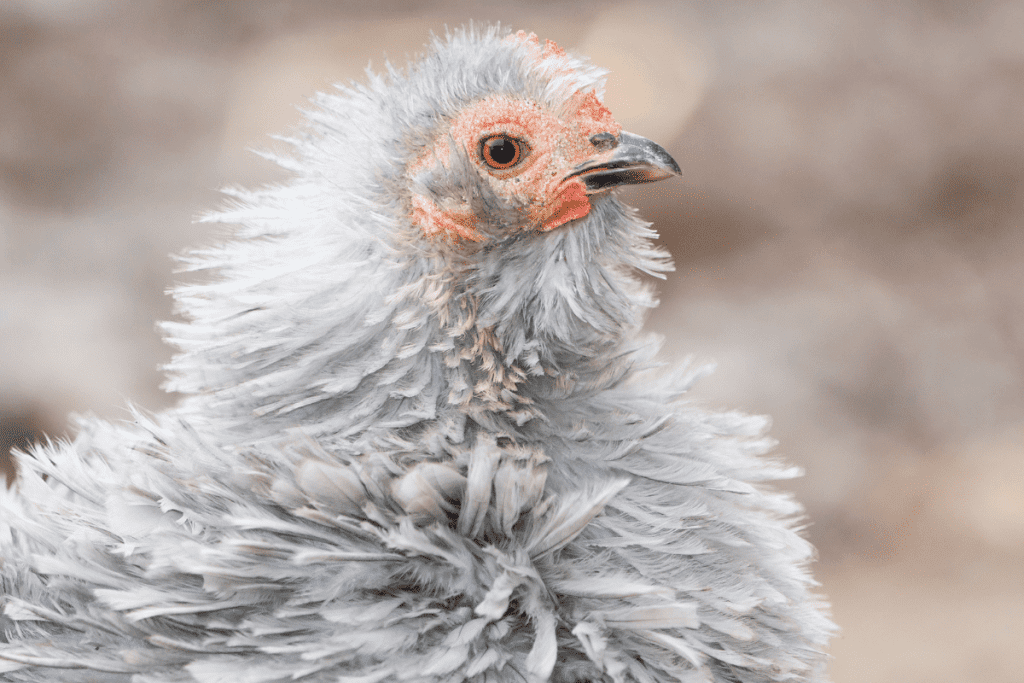
The Frizzle is a unique chicken breed.
They are most popular and well-recognized in Australia and European countries.
Frizzle chickens have the unique feature of curled or crimped plumage, making them very easy to identify.
Other chicken breeds have been crossbred with Frizzles to share this unique trait of frizzled feathered birds.
Despite look-alikes, there is an officially recognized breed for Frizzle chickens.
They come in a wide range of colors, including gray.
California Gray
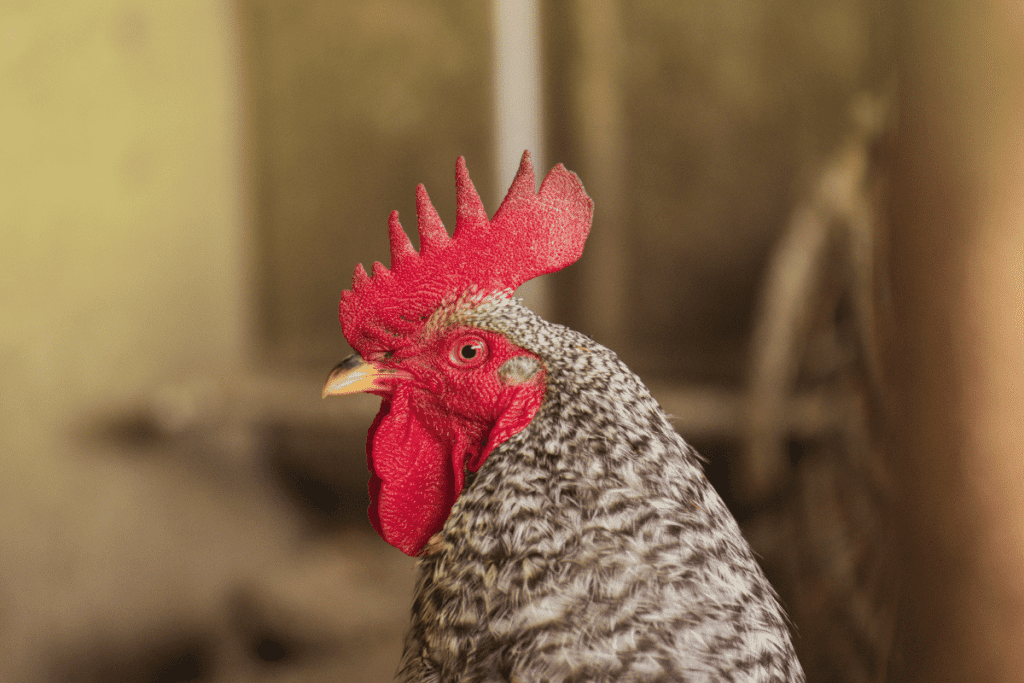
The California Gray is a breed of chicken originating in the state of California in the United States in the 1930s.
The California Gray hen is a dual-purpose chicken capable of laying respectable eggs while also supplying meat.
While they are not blue or lavender, the barred feathers with black and white coloring give off the appearance of gray.
California Gray chickens are considered friendly and suitable for a wide range of environments.
They are an excellent choice for free-range farms and backyard farmers.
How Do Chickens Come Out Gray?
Gray chickens result from a wide range of genes.
This often leads to darker greys and variations in the grey coat.
Having a domestic chicken with colorful patterns or unique colors adds a special choice for backyard chicken.
There are many different factors and colors capable of creating a gray appearance on chickens.
This is good news for those looking to add some gray to their flock.
There are many options for those looking for gray chickens.
As a chicken owner, it helps to know what you are looking for.
We’ll go over the common terms used to describe gray chickens so you know what to look for when you pick out some new chickens.
The base color for gray chickens is usually due to black body feathers combined with a special gene to create a grey bird.
The other feathers contribute to the color and make them look gray.
You’ll see many gray chickens, so it is good to know how this color appears on birds.
This is due to genetics.
Chicken breeders have discovered ways to isolate and highlight certain desirable genes through crossbreeding.
This works out well for those looking for gray, as chicken breeders have discovered how to accomplish this and exploit the genes in our favor.
Blue
You’ll see a lot of chickens referred to as blue.
These chickens bear feathers and plumage with blue hues.
The color is not a bright blue as much as a very light and muted blue color.
For a chicken breed to be considered blue, there needs to be limited to no colors leaking through.
The blue feathers result from an incomplete dominant gene acting on a black chicken.
This means combining the genes will give you either a gray chicken or a white bird with a blue splash.
If you breed two blue chickens together, expect half of them to come out gray while the other is speckled, splashed, or white.
Lavender
Lavender chickens are bred a little differently than blue varieties.
They still produce a gray shade on the bird with a beautiful light lavender color as an undertone.
Sometimes lavender breeds of chicken are called self blue, so you may see this term describing gray chicken breeds.
In general, lavender birds are considered fragile and not the most durable of birds.
Their plumage tends to fall out easily, and many don’t live very long outside the egg.
For a chicken to come out with lavender plumage, it must be homozygous for the lavender gene.
One benefit of this is if you breed two lavender chickens, you are sure to get lavender chicks.
We don’t recommend beginner chicken breeders attempt to breed Lavender varieties as they tend to be very fragile.
It is best left to professional and very experienced breeders to ensure everything goes well.
Barred
Blue and lavender chickens are usually specialty chickens and are hard to find in many areas.
If this is the case for you, you still have a chance at getting a gray chicken.
Barred chickens are birds with both black and white plumage.
When these two colors get speckled in the feathers, it creates a grey appearance.
Since there are many different varieties of barred chickens, they tend to be much easier to find.
Barred chickens are also not genetically bred to produce this color.
This makes barred chickens considerably more hardy and adaptable than those of the blue and lavender varieties.
It is also easy to find a bantam breed with barred color combinations.
This is good if you are looking for a medium-size or small bird.
Where Can I Get Gray Chickens?
Getting a gray chicken may be trickier than other colors, but it is completely doable.
There are quite a few places to get chickens for backyard chicken keepers.
Finding a gray chicken may take more research and patience, but they are well worth the wait.
Many of these common gray breeds also come in a bantam variety if you want a smaller bird.
Online
Unless you live in an area with an abundant variety of chicken breeds, you may have to look online for gray options.
This is especially true if you are looking for a rare blue or lavender breed of chicken for your chicken coops.
We recommend researching the breeders you purchase from to ensure they are reputable and trustworthy.
You don’t want to shell out the big bucks for a rare lavender chicken and end up with a barred or speckled bird.
Local Farm Store
The local farm store is the most convenient choice for getting chicken.
This way, you see the chicks and meet knowledgeable people to ensure you are getting what you want.
It is also preferable to purchase from a local farm store to remove the need for shipping birds.
Shipping birds is a process and adds unnecessary stress to the bird.
For fragile varieties like lavender breeds, shipping may be too much for them.
Chicken Breeders
Another excellent way to get a gray chicken is from chicken breeders.
If you are in an area with many people breeding chickens, you may be able to find a blue, lavender, or gray chicken within driving distance.
One major benefit of purchasing from a specific chicken breeder is knowing where your bird comes from and get additional details.
You’ll be able to ask them questions about the parents and how experienced they are in breeding specialty or rare breeds.
Since some lavender and blue varieties are fragile, it helps to know they come from healthy parents and an experienced breeder.
How useful was this post?
Click on a star to rate it!
We are sorry that this post was not useful for you!
Let us improve this post!
Tell us how we can improve this post?
